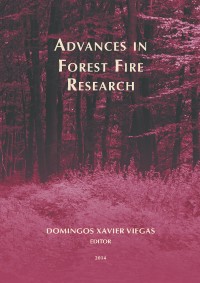Please use this identifier to cite or link to this item:
https://hdl.handle.net/10316.2/34310| Title: | Fire effects on the physical environment in the WUI using FIRETEC | Authors: | Pimont, F. Dupuy, J-L. Linn, R. R. |
Keywords: | WUI;clearing;radiant flux;gas temperature;building;FIRETEC | Issue Date: | 2014 | Publisher: | Imprensa da Universidade de Coimbra | Journal: | http://hdl.handle.net/10316.2/34013 | Abstract: | In France, the clearing distance between buildings and forest edge is 50 m, to allow fire fighters to protect those buildings. Current building recommendations in the wildland-urban interface derive from fire-safety tests on building materials using heat exposures (duration and magnitude) that are expected to be different from those produced by wildfires. Beyond a few experimental data released after the International Crown Fire Modelling Experiment, there is a lack of characterisation of the physical environment of a building or human target within a cleared area, that receives hot gases and radiant fluxes from a crown fire. In the present study, we evaluate FIRETEC’s ability to simulate heat fluxes based on some available experimental data and subsequently use it to characterize the radiant fluxes, gas temperatures and velocities around a human or building target. Simulations have been performed in a mature Aleppo pine forest within a 600 by 400 m domain. The conditions of the fire spread were severe (30°C, wind up to 50 km/h, slope until 30%). Radiant fluxes and gas temperatures were computed for several distances between the forest tailing edge and a target that represents either a building or a fire fighter. Peak radiant heat flux magnitudes decreased by about 80% when the target was at 50 m compared to a target at 10 m. This is between 90 and 95% reduction o0f radiant flux reduction observed at 50 m compared to the forest edge. For the purpose of comparison with reference acceptable thresholds for both materials and fire fighters, the peak values of the average over one minute of the instantaneous radiant fluxes and gas temperatures were computed. These values support the notion that a clearing distance of 50 m is appropriate in the tested conditions for both thermal radiation and gas temperature, even if radiant fluxes remain high is the sloped case. This study shows a new type of application for physics-based models such as FIRETEC. Simulations demonstrate the interest of clearing around buildings and can help provide recommendations about the appropriate clearing distance. It can also be used for building material specifications. | URI: | https://hdl.handle.net/10316.2/34310 | ISBN: | 978-989-26-0884-6 (PDF) | DOI: | 10.14195/978-989-26-0884-6_83 | Rights: | open access |
| Appears in Collections: | Advances in forest fire research |
Files in This Item:
| File | Description | Size | Format | |
|---|---|---|---|---|
| 978-989-26-0884-6_83.pdf | 2.09 MB | Adobe PDF |  |
Items in DSpace are protected by copyright, with all rights reserved, unless otherwise indicated.
